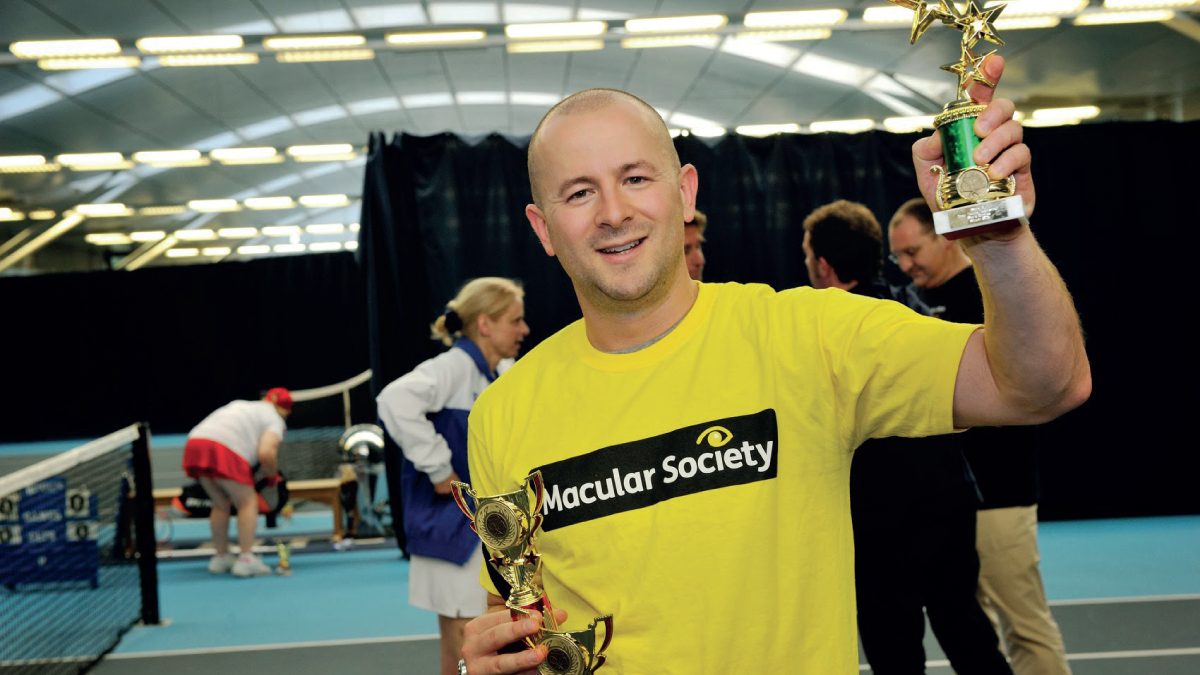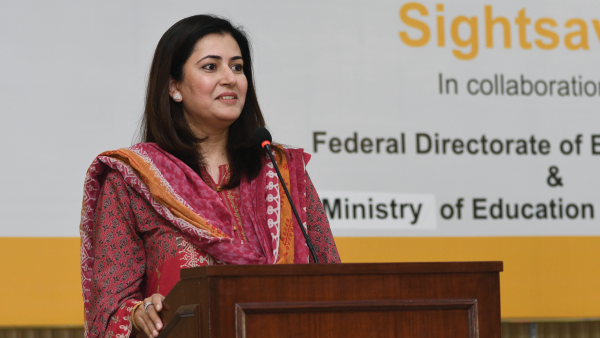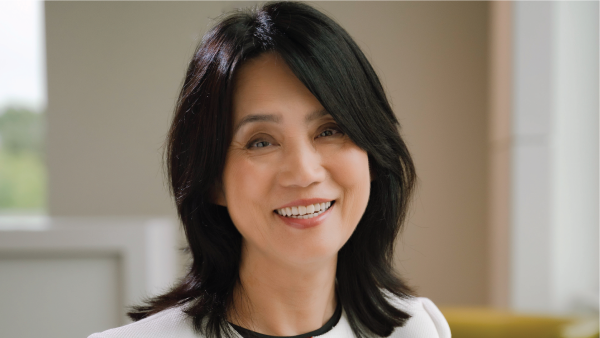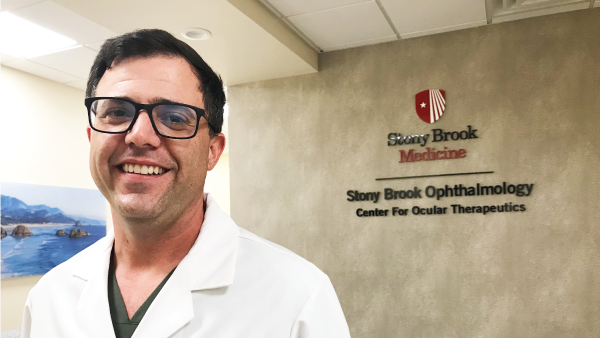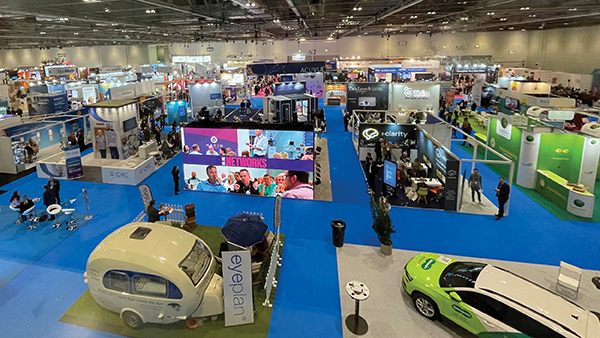Paul Ryb: Ophthalmic Technology Champion
Boosting ophthalmic innovation investment in the UK
Paul Ryb is an ophthalmic venture capital investment specialist. Dedicated to supporting the visually impaired (VI) community to “live and succeed with sight loss,” he operates as a VI patient advocate and secures investment capital for tackling eye disease and unnecessary blindness.
Here, he tells us how he is driving innovation in the space, taking inspiration from ophthalmic investment activities in the US and drawing on his own personal and professional background.
What issues do you face as an ophthalmology innovation investor?
The UK presents a challenging environment; despite having top-tier facilities and talent, it lacks a venture capital focus on ophthalmology. It’s a huge gap that highlights the disparity between the financial investment climate and the academic world of ophthalmology. But we see this in other countries, too. Globally, life science investments are heavily skewed towards oncology and cardiology, setting standards that don’t align with the needs of ophthalmology.
I also feel a certain amount of frustration with UK charities. After spending a lot of time on the boards of various charities, including RNIB, I saw a troubling lack of effort towards prevention and investment in ophthalmology cures. The UK has around 700-800 sight loss charities generating close to £1bn in revenues per year, with most of this dominated by a few large charities like RNIB and Guide Dogs for the Blind. Despite this, only about 1 percent of the combined revenue is gifted to ophthalmic research, and this is mostly in the form of grants rather than being structured as venture capital seeking to support innovation and drive programmes through to commercialisation, and ultimately real patient outcomes.
UK charities such as the Macular Society, Fight for Sight, the Thomas Pocklington Trust, and Moorfields Eye Charity do lead the way supporting early academic research, but they offer grants without any consideration for return on investment or actually for scaling to commercialization.
Early academic research grants are important, but alone they cannot drive real near term patient outcomes. The reason for this is quite simply the scale of capital required to deliver commercial success for an ophthalmic drug or device program. Conservatively speaking, it will cost up to $100m to try and deliver a successful commercial outcome in this field, therefore the UK Sight loss charities supporting research on less than £10m/year will barely have a chance of making any real progress in this field in my lifetime, and at their current grant-making pace.
How does the UK compare with the US in the ophthalmology investment space?
Living part-time in the US, I see over there a more robust ecosystem of ophthalmology venture capital. I connected with Rob Rothman, for example, a key figure in ophthalmic podcasting and venture capital, through the Ophthalmology Innovation Source (OIS) platform. Rothman co-founded InFocus Capital, one of the first ophthalmic venture capital funds in the US, where ophthalmologists frequently invest their substantial earnings into innovation.
I have become a venture partner with InFocus, as well as supporting and advising other prominent US ophthalmic venture funds, such as ExSight Ventures and the Ophtha Fund. Last year, I helped fund three programs collaborating with the Alcon Seed Fund. This year, I have continued to advise on a number of exciting programs and look forward to announcing progress in key unmet areas advancing the treatment for glaucoma, macular disease, and dry eye, among many others. The difficulty in attracting large capital globally into ophthalmology is evolving rapidly, and we can already highlight some significantly large transactions recently in the form of “Big Pharma:” Astellas buying Iveric for $6bn, and Merck buying the Eye Bio Fund for $1.3bn.
The UK needs a cultural shift to foster a more entrepreneurial and investment-focused approach. Sadly today, the majority of the UK life sciences sector has little to no ophthalmic investment exposure, despite the fact that eye disease itself generates the second largest footfall by class behind cancer within the NHS. Indeed, in recent research reports commissioned by both RNIB and Fight for Sight, these charities estimate the annual cost to the UK economy for not investing in better eye research is a staggering £25bn!
In my experience, and by learning from the US models, there is potential to bridge that gap between academic research and scalable commercialized innovation. Keith Valentine – who has retinitis pigmentosa and leads Vision Foundation (recently merged with Fight for Sight) – shares my vision, and is also seeking to explore such sustainable and impactful investment channels. An obvious place to look and learn in the US is at the magnificent impact the US’s Foundation for Fighting Blindness has achieved. In 2018 they expanded on their small grants program to establish the philanthropic venture capital model – the Retinal Disease Fund. They did this with their own money, seeding the fund with an initial $70m. Today the fund stands at close to $200m, having achieved an impressive exit form one of its initial investments.
I would say that the COVID-19 pandemic provided the UK with a valuable lesson in venture investing. SV Health Investors’ Kate Bingham’s efforts showed the government the importance of investing in vaccine development, securing early access to treatments at an advantageous cost. If the UK doesn’t invest in ophthalmology, it will continue to face high patient and economic costs without benefiting or reaping investment rewards from its domestic talent and facilities.
Can you talk about your own journey with dry macular disease and how technology has helped you?
Where my 30 year background in investment banking gave me a robust understanding of risk management, my experience of dry macular disease drove my journey into ophthalmology innovation and life sciences.
At 37, I woke up with a material step change in my vision. Being severely myopic, I relied on contact lenses, but this sudden central vision loss was a shock. At Moorfields, I was diagnosed with dry macular disease and told there was no cure. This devastating news left me unable to work effectively in a high-pressure investment banking environment. I had to stop driving immediately, and my ability to use computers and other technologies were severely impacted. I felt completely lost without guidance or support.
Fortunately, a colleague directed me to Blind in Business, a small charity supported by the Bank of England. They provided me with immediate support and positive role models. The same positive experience also came from invaluable peer support provided by the Macular Society and VI IT expertise from the wonderful Sight & Sound Technology, which is the UK and Ireland’s main provider of hardware and software for the blind, visually impaired, and those with learning and reading difficulties. Sight & Sound still supports me today in everything I do, including sponsoring me for visually impaired tennis! (I am competing in the World Visually Impaired Tennis Championships later this year, hosted in Italy, where I am trying to reclaim my world title achieved back in 2018.)
Over the past decade, advancements in assistive technology have significantly helped both the visually impaired and the blind. Therapies take time to develop, but technology has offered immediate solutions to enhance people’s independence and quality of life. Today, all I need is an iPhone and iPad. Assistive and mainstream inclusive technologies now help even those with mild VI – features like contrast adjustment and text enlargement are not limited to the visually impaired.
While technology has been instrumental in my journey, my most valuable advice has come from the VI community itself, which has provided the support I needed to truly be able to live and succeed on my sight loss journey. To capture this experience, I recorded four podcasts for the RNIB specifically focussing on my experience in employment, sport, IT and health tech.
Where do we go from here?
There’s a massive opportunity in the UK to finance new innovations and achieve significant financial returns while improving treatments. I’m optimistic about bringing the UK sight loss charities with me, and establishing a successful UK based ophthalmic venture fund in collaboration with my US partners, focused on delivering real patient outcomes in my lifetime. Collaborating with the British Business Bank and with US partners, we can navigate and de-risk the complexities of ophthalmology venture capital and make meaningful advancements that will secure more effective treatments and better outcomes for patients.
The New Optometrist Newsletter
Permission Statement
By opting-in, you agree to receive email communications from The New Optometrist. You will stay up-to-date with optometry content, news, events and sponsors information.
You can view our privacy policy here
Most Popular
Sign up to The New Optometrist Updates
Permission Statement
By opting-in, you agree to receive email communications from The New Optometrist. You will stay up-to-date with optometry content, news, events and sponsors information.
You can view our privacy policy here
Sign up to The New Optometrist Updates
Permission Statement
By opting-in, you agree to receive email communications from The New Optometrist. You will stay up-to-date with optometry content, news, events and sponsors information.
You can view our privacy policy here
